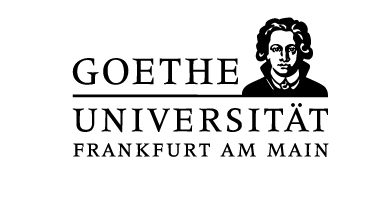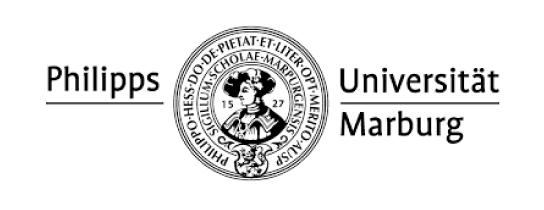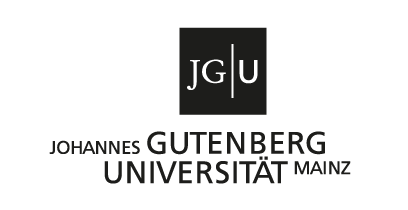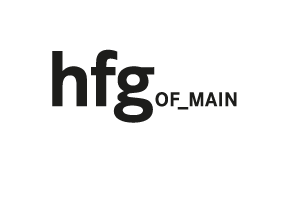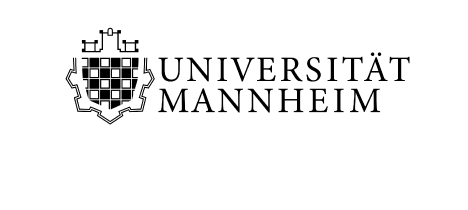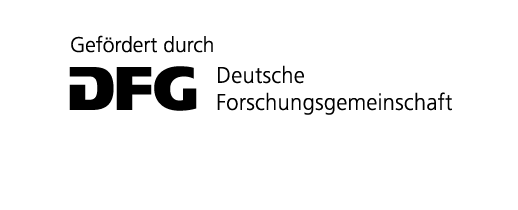STICKY FILMS. CONCEPTUAL & MATERIAL EXPLORATIONS
June 1-3, 2023, Goethe-University, Frankfurt
organized by the DFG-Research Training Program “Configurations of Film”
CONFERENCE VENUE
Renate-von-Metzler-Saal, 1st floor Casino at Campus Westend
Stickiness is ambiguous. Sometimes we want to avoid it, and sometimes we need it. Sticky tapes can repair and mend, or accelerate decomposition and destruction. While film editors and projectionists enjoy the convenience given by the practice of cutting strips of film and sticking them together with tape, archivists may have to deal with “Sticky Shed Syndrome” when over time magnetic tape sheds a residue, slowly hiding away the content between increasingly sticky layers of material. How can we conceptually think of these (un-)desirabilities of stickiness in relation to objects in film and media studies?
By capturing the double meaning of film as both a medium that exists within cultural industries, and as a thin viscous layer atop something, the conceptual and material explorations of films as inherently sticky go against the assumption that current transformations in film and media culture are continuous and smooth, and rather provokes us to experience and feel them differently, even paradoxically.
We have gathered scholars from various fields to think about, with, and through these contradicting or even resisting conceptions of stickiness for the study of configurations of film and media. Where does stickiness surface, what does it carry along, powerful momentum or unwanted distraction? Our line-up brings together erratic examples of stickiness, adhesives, glue, and paste to create contact zones.
You can download the full conference program (incl. abstracts and short biographies) here. And all conference protocols here. You can also find the program, abstracts and links to the individual protocols below.
During each panel and keynote one of the PhD candidates of the current cohort of Configurations of Film will document the content of the presentations and especially the discussion afterwards in a written protocol. Our aim is to both make the research presented at our conference as well as the otherwise often lost discussions accessible beyond the on-site live event. We will update the program below with links to download these protocols during the conference.
Conference Modalities
This is an on-site live event. Online participation is not possible. To register for the event please use this form. If you have further questions please contact the organizing committee via sticky2023[at]gmail.com.
The conference will also feature an exhibition with objects from the collections at Goethe University. We sent the Call for Papers to all 40 collections to find out what their common contributions to the topic might be and what their unexpected points of contact are. The arrangement is intended as an exploration of stickiness within Goethe University. The objects will be exhibited in the conference room, allowing them to comment on the presentations and discussions through their presence.
The exhibition was conceived and curated by Judith Blume and Kerim Doğruel, with contributions by Judith Blume, Kerim Doğruel, Silas Edwards, Felix Giesa, Alexa Höhn, Franziska Kohler, Susanne Pietsch, Matthias Recke, Bettina Schulte Strathaus, Katja Schulz, Georg Zizka; supported by Clara Podlesnigg, Tsvetelina Topalova. For all collections at the Goethe University, see: sammlungen.uni-frankfurt.de
You can find the official playlist, including the music played at the Opening on June 1, on Spotify here. And on YouTube here.
Organized by the Graduate Research Training Program 2279 Configurations of Film. The conference is made possible through the generous support of the Deutsche Forschungsgemeinschaft.
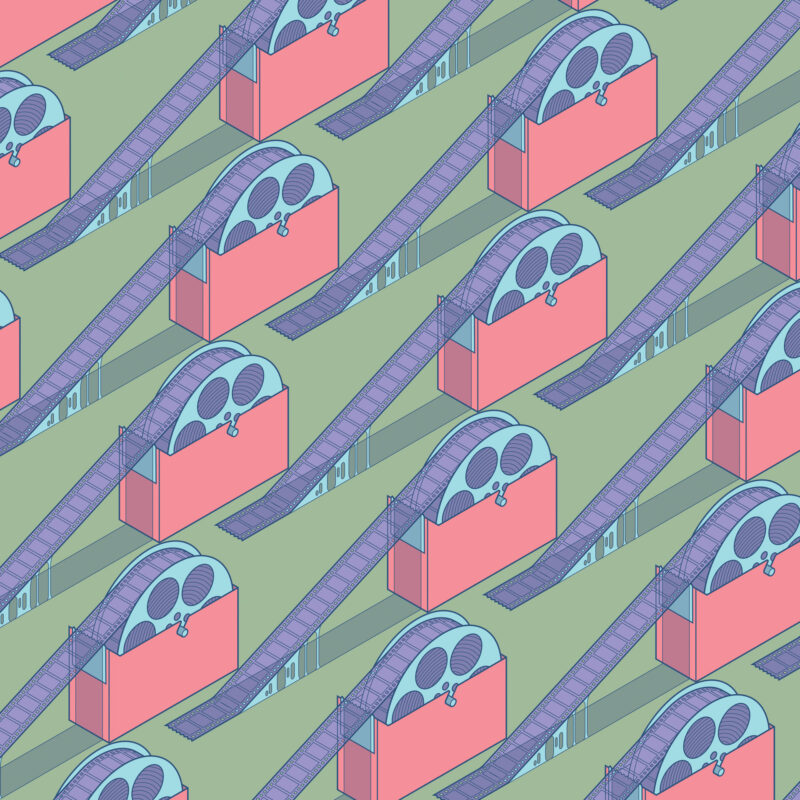
PROGRAM
THURSDAY JUNE 1
14:00 Arrival
14:30 Opening & Welcome by the organizing committee
Introduction to the Pop-up Exhibition by Judith Blume (Collections at Goethe University, Frankfurt)
15:30-17:00 Stickum
Marie Sophie Beckmann (Oldenburg): Sticky Screens: Between Resistance and Cooperation
Interactions between screens and audiences, including protests and scandals, have been a part of cinema since its inception. These incidents reflect societal expectations, identification, and the prevailing conceptions of value. However, what does it mean for a screen to become “sticky” in its material, conceptual, and affective dimensions? This presentation explores the notion of the sticky screen in historical case studies. This includes incidents in which audiences, films, and screens come into meaningful contact, such as a screening during which student protestors threw red paint bombs at the screen in response to the “dirty” images projected onto it. Such incidents are more than testimonies to moral outrage; they can be seen as violent but creative, transformative, and cooperative operations deserving of closer attention.
Tara Najd Ahmadi (Vienna): The story of an Interrupted Exhibition
The presentation will focus on the interrupted exhibition of painter Nicky Nodjoumi at the Tehran Museum of Contemporary Arts (TMoCA) in 1979, which occurred shortly after the success of the Iranian Revolution. The missing paintings from the exhibition and the pieces of sticky tape and nails left on the museum walls are used as proof of another reality that is concealed. The paper will discuss the incompletion of the exhibition in relation to the utopian dreams of the Revolution.
Rodrigo Faustini (London): No ideas but in (sticky) things: messy viscosity and experimental film
Drawing on the works of experimental filmmakers such as Harry Smith, Jennifer West, and Stan Brakhage, Rodrigo Faustini’s presentation explores the poetic “negative capability” of viscous materials in film. By subverting the standard utilitarian use of thick viscosity as an adhesive, Faustini argues that sticky faktura allows for incohesive agglomerations and precarious assemblages that promote the work of the formless. This poetics culminates in Lettrist Gil Wolman’s “scotch art”, which repurposes latent cinematic components into long, messy strips of “dissoluted and reconstituted movement”.
Chair: Sema Çakmak
Read the protocol of panel 1 “Stickum”
18:00-19:30 KEYNOTE 1
Amber Jamilla Musser (New York): The stickiness of Threat: Black femininity and the uncanny in Jordan Peele’s Us
Unlike Get Out, whose plot twists provided some of the film’s shock, the trailers for Us foreground the film’s conceit: a family comes home from a day at the beach to find murderous doubles in their home. While the film complicates this reveal, the sense of dread that the film activates comes not from suspense but from its mobilization of the uncanny. Even before the doppelgangers are introduced, the film percolates with the sense that something is amiss. In these sensorial moments, the film allows us to see how Black femininity acts as a disruptive force in and through its “stickiness.” This talk will give us new ways to understand the operations of stickiness by working through the aperture of threat while also attending to its fugitive dimensions.
Amber Jamilla Musser is professor of English at the CUNY Graduate Center. Her research focuses on the intersections of race, sexuality, queer theory, and aesthetics. She is the author of Sensational Flesh: Race, Power, and Masochism (NYU Press, 2014) and Sensual Excess: Queer Femininity and Brown Jouissance (NYU Press, 2018).
Read the protocol of the 1st keynote
FRIDAY JUNE 2
10:30-12:00 Secretions
Emma Merkling (Durham): Sticky Spirits: Stereoscopic Photography and Ectoplasm Mediumship
In the mid-1920s, an all-male team of scientists gathered in the Boston séance room of the medium ‘Margery’ Crandon to study the extraordinary phenomena she produced — above all, the visceral, quasi-biological ‘ectoplasm’ that seemed to ooze from her body in a trance state. The scientists registered the visceral quality and fleshiness of Margery’s ectoplasmic manifestations in terms highly evocative of clamminess and stickiness. This talk centers on the stereoscopic photographs of Crandon taken by the researchers to index the ‘spiritualist’ phenomena witnessed, and explores the relationship between these dimensional photographs, hapticity, and visceral ectoplasm.
Julia Willms (Cologne): Disgusting Films, Technological Anxiety: Material Explorations of Sticky Horror
This paper explores the relationship between disgust and collective anxieties about technology in the horror genre. Stickiness, defined as a performative “relation of doing,” is employed to observe how cultural depictions of non-fictional killings and their functionalization in fictional contexts, often described by means of the generic term “Snuff”, elicit these emotions. By analyzing the film Censor (UK 2021), the paper discusses how the material differences within the images, the display of recording/receiving devices and the transgression of the diegetic levels, contribute to the cultural mythology of “Snuff”.
Fabienne Bieri (Basel): The Affective Politics of Queer Pornography
Sexuality and queerness – commonly associated with sexualities, bodies and identities outside of the heteronormative and cisgendered system – have been othered through the use of disgust and its connection to the “below/beneath” categorization. By showing practices, bodies, or body fluids deemed disgusting and deviant, queer pornography reappropriates the affective politics of otherness, refusing commodification, sanitization, and respectability politics currently on the rise in the neoliberal pornography industry. This can help us not only in our understanding of pornography, but of queerness as a practice and site of resistance, rather than merely an identity.
Chair: Kerim Doğruel
Read the protocol of panel 2 “Secretions”
14:00-15:30 Gooey Grounds
Olja Alvir (Vienna): National glue. Stuck with Yugoslav WWII film
Yugoslav WWII film is a genre of national cohesion. Films centered around the antifascist resistance struggle of the second world war were a cornerstone of the socialist state’s self-fashioning as a new, multi-ethnic and -religious society. The effort of (re-)creating Yugoslavia is staged through characters that crawl through the mud and emerge from the thicket. Their ‘stickiness’ read as affirmations of their belonging to the respective landscape. An analysis of Yugoslav partisan film according to various valences of the term “sticky” promises insights into the genre’s conceptualization of the relationships between national imagination, gendered bodies, and history.
Lena Trüper (Los Angeles): Fly Paper
Caution! This paper is extremely sticky and toxic for everyone with two eyes, two wings and six legs. With this in mind, we will try to circumvent it. Creating a superb visual contrast to white things, we have always been attractive and disruptive to various kinds of media in Western industrialized nations, from Renaissance paintings to Hollywood blockbusters and toilet bowls. We will explore why “the human” always wants to get rid of us, and why we are better off to transform into an optical illusion. That to be said, discussions on race, class and gender are at the top of our priority list. In case of disagreement, it is not recommended to slay us because that leaves unpleasant stains.
Andrea Liu (New York/Berlin): “Sticky Heritage” and Its Discontents
“Sticky Heritage” refers to the use of heritage museums, monuments, and the “heritage industry” to impart a homogeneous, unified national identity. In the last 15 years “Sticky Heritage” has been problematized (if not demonized) as an instrument of soft power or as another insidious “Ideological State Apparatus” (Louis Althusser). My talk looks at what has now become a staple in heritage museums: the documentary/ethnographic short film presenting the immigrant. My paper asks in what ways do the visual codes of these films portraying the “Colonial Other” unwittingly perpetuate the binary between “immigrant” and “native” which their verbal argument contests?
Chair: Laura Teixeira
Read the protocol of panel 3 “Gooey Grounds”
15:30-16:00 Film Snack
18:00-19:30 KEYNOTE 2
Jurij Meden (Vienna): Film Fermentation – A Film as an Object in Spacetime.
Physical decay (in case of organic matter accompanied by “stickiness”) is usually perceived as a challenge to the idea of cultural preservation. But since this challenge is ultimately insurmountable, perhaps we should welcome deformation of (both material and immaterial) past as something necessary for its preservation.
Jurij Meden is a curator at the Austrian Film Museum in Vienna. Previously he worked as head of the program department at the Slovenian Cinematheque in Ljubljana and as curator of film exhibitions at the George Eastman Museum in Rochester, New York. He has helped preserve and restore several Yugoslavian experimental films. He also worked as a programmer at Ljubljana’s first arthouse cinema Kinodvor, program coordinator at Crossing Europe film festival in Linz, editor at the scientific and academic publishing house Sophia in Ljubljana, editor-in-chief of KINO! (a journal for cinema, poetry and politics), and co-director of the Nitrate Picture Show, a festival of film conservation. He is the recipient of the 2017 Jon Garlock Labor Educator of the Year Award.
Read the protocol of the 2nd keynote
SATURDAY JUNE 3
10:45-12:00 Attachments
Nils Meyn (Berlin): Sticky Notes and Sticky Pleasures. Approaching Video Smut and Porn Collections at the Archive
Sticky notes are a common sight in porn collections, but they’re not just functional. They reveal how private collectors organize their desires and pleasures. This presentation examines the sticky notes attached to VHS and DVD porn stored at the Schwules Museum in Berlin, exploring their significance as “indexes of desire.” It considers how sticky notes help us understand the affective dynamics of porn, including copying, compiling, and categorizing. Finally, it discusses how the perceived stickiness of porn challenges the respectability of archival institutions, but emphasizes the importance of private tactics and affects in everyday, sexual, and fan cultures.
Ting Xu (Amsterdam): Make Me Stop Sticking
This paper focuses on the trope of stickiness in films for the broken heart- a genre shown on Google’s search engine. Comparing Eternal Sunshine of the Spotless Mind (dir Michel Gondry, 2004) and 失恋33天 (dir Huatao Teng, chinese, english title Love is not Blind, 2011,), Ting explores how certain songs repeat themselves as earworms to play out scenes of fantasy and attachment. In an eccentric collection of objects and characters, she also observes the materiality and other figurative language of stickiness. Her aim here is to point out how senses of stickiness continue to charge affect and reflect broken social relations and emotional processing without missing the motivation of viewers who approach this type of film and hope they can heal and move on after heartbreak.
Chair: Clara Podlesnigg
Read the protocol of panel 4 “Attachments”
13:30-14:00 Film Snack
14:00-15:15 Cut&Paste
Miriam DeRosa (Venice) & Andrea Mariani (Udine): Creation by Destruction. Experimental Film Practices and the Art of Splicing
This paper explores the splicing process in analogue film post-production as a key element in the creation by destruction of experimental films. De Rosa and Mariani focus on Ubaldo Magnaghi’s avant-garde city symphonies, examining how splicing allowed him to reconfigure the film and create new works at the cost of sacrificing some frames. The paper aims to contextualize splicing as a way of reconsidering the film as a whole, shedding light on a new way of thinking about it. The authors draw on works by Flusser and Ramey to argue that destruction can be a productive creative move that displays the film material in its full surface.
Sigal Yona (Ghent): An Inquiry into Film Poster Art from Southern Tel Aviv, 1960s-1970s
This paper presents a study of film posters from southern Tel Aviv during the 1960s-1970s. During this time, cinema theaters in the area specialized in films from Egypt, Lebanon, India, Turkey, and Iran. The paper examines the emergence of localized aesthetics of the film poster, resulting from a global shift in film poster design. Film posters carried and constructed meaning through the use of cut-and-paste techniques, as well as graphic elements, color, and text that evoked fantasy and emotion. The paper draws on Sara Ahmed’s conceptualization of stickiness as an effect of surfacing, analyzing these localized film posters in light of the continuity of cultural practices across geographies and time. The visual analysis of the film posters is supported by audience interviews and programming data.
Chair: Fadekemi Olawoye
Read the protocol of panel 5 Cut&Paste
15:30-16:15 Wrap up with Ritika Kaushik (Frankfurt) & Philipp Dominik Keidl (Utrecht)
